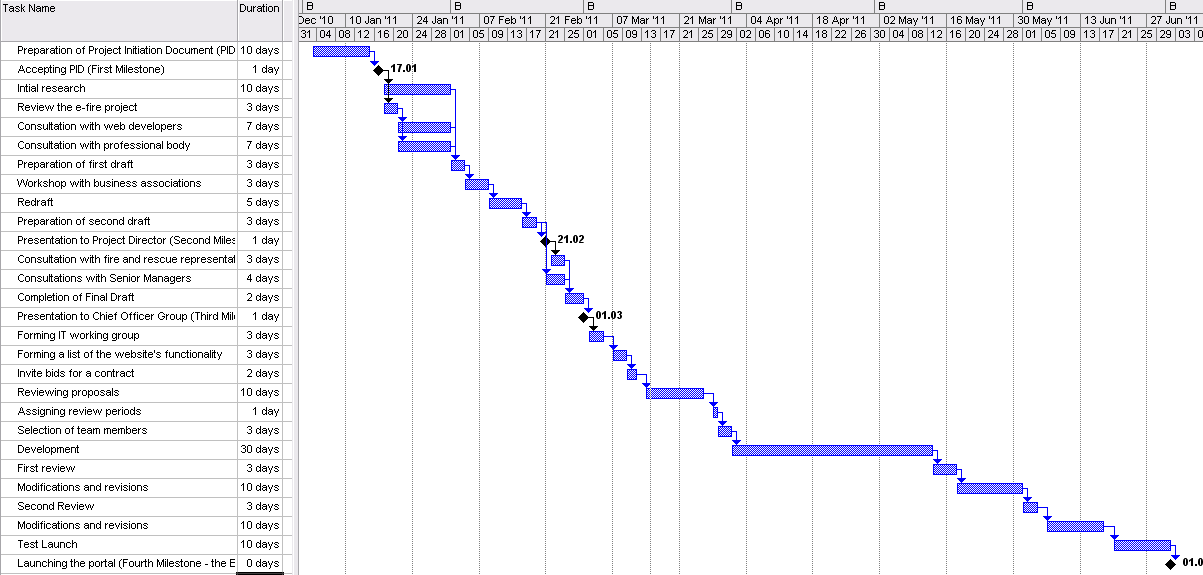The Aim
The aim of the present document is to summaries the information collected to start the project of improving online fire prevention information for businesses. The document will lay out the structure of the project, its main tasks, timeline, and other aspects that will enable the stakeholders to acknowledge the significance of such project and have reference materials for each of its stages. Finally, the aim of the document is to present a business case that will convince the board of the project’s sound basis for funding.
Background
The importance of fire prevention cannot be underestimated. Awareness in that matter is all about information, which is available and accessible. In that regard, such awareness can be connected to the field of public education, which is one of the major fire prevention methods that can be used to reduce life loss from fire” (Cote and Bugbee, 1988). With the advancement of internet technologies, such awareness increasing initiative received a new medium of delivery, which can and is utilised in various purposes. The main aim, in that matter, remains in delivering essential fire prevention information to target audience. Businesses can be seen as important target audiences, a fact which is supported through several legal frameworks. First of all, general fire safety in all non-domestic premises in England has a policy responsibility by Communities and Local Government (CLG) (HSE, 2010). Such legislation focuses on a risk based approach for assessment which business premises should implement. Such responsibility, previously managed by Health and Safety Executive (HSE), is now related to respective local fire and safety authorities (HSE, 2010).
Secondly, the emphasis on increasing awareness in businesses can be seen through the provision of the Fire and Service National Framework, in which it is stated that,
Fire and Rescue Authorities are ideally placed to promote a better understanding of how fire protection measures can reduce the risk to life and limit the detrimental impact of fire on the environment and the economy through their role in providing fire safety advice to the business community. (Department for Communities and Local Government, 2008)
Such aims as initiatives in increasing the awareness of fire prevention can be seen through improving the knowledge management capabilities of fire and rescue services, in which an online portal will provide business owners information and advice on a range of topics, including legal requirements, assessment techniques, and others. Such information will provide a good understanding of the steps business owners and their respective departments will taken to increase the awareness of staff and assess such awareness, along with any risk assessment initiatives they should undertake to comply with safety requirements. Improving information delivery online to business entities is an important step in improving informational exchange, promoting safety and increasing the awareness of fire prevention, and finally improving the collaboration between fire and rescue services and business with the aim of creating safer communities.
Objectives
The main objective of the current project is to improve information delivery online on fire prevention for businesses. Such objective can be dived into the following sub-points:
- Developing a portal for information on fire prevention for businesses within a period of 6 months.
- Reduce the number of non-domestic fires by 20% in 2 years.
- Increase the conformance of businesses to safety requirements by 10%.
- Reduce fire inspections and associated costs by 50% by the end 2012.
The criteria that measure the success of the project can be seen through the fact of the launch of website, risk assessment initiatives that will be conducted on the website, measurements for preparedness. Additionally, quantitative measures will be determined on a regional and national level through inspections that will measure the number of fire incidents, the number of false alarms, compliance with safety regulations, and the costs saved (HWFR, 2010).
Business Case
The business case of the project can be evaluated through the example of e-Fire, a national project, funded by the Department for Communities and Local Government, and which aimed at delivering several facilities, each through a certain component of the Fire and Rescue Services. The most obvious common element can be seen through the objective of information exchange and information sharing, e.g. a range of exciting interactive services and products produced and delivered over the internet, for citizens and business (County Durham and Darlington, 2010, Local E-Gov, 2005, Brigham and Introna, 2006). Part of the project was abandoned due the timetable of other e-initiatives. Nevertheless, its implementation on a local level might borrow the same idea, enjoying the same benefits such project was to provide.
Benefits
A portal with fire prevention targeted towards businesses will enable “those responsible for commercial premises to assess fire risk, plan control measures and prepare escape plans” (Local E-Gov, 2005). The benefits of such project can be seen through the deliverables of the e-fire project, namely in the “fire safety and business” stream, which main benefit can be seen through providing an economic vitality to communities. Accordingly, the financial benefits can be seen through the way fire and/or arson can economically impact businesses in particular and communities in general through businesses interruption, closure, loss of jobs, loss of community amenities, and others (LONDON FIRE BRIGADE, 2002). The importance of prevention in su8ch context can be seen through the fact that “70% of businesses involved in major fires either don’t reopen of fail within three years” (Fire-Risk Assessment, 2010). The benefit of the electronic method of delivering information to businesses is expected to save costs associated with decreasing the number of inspections.
Costs
The costs of the project can be divided between the material costs of the development of the website, and the administrative costs connected to personnel, both of which can be seen through the following table:

- Personnel – 58200
- Material – 101000
- Sub Total – 159200
- Contingency @ 10% – 15920
- Total – 175120
The costs of developing a website were taken through the costs of developing government websites. The least cost was taken considering the directivity of the website’s functionality, and its regional, rather than national orientation.
Analyzing the costs and the benefits of the project it can be stated that the collaboration fire rescue safety and business is a feasible initiative, which benefits will compensate the costs associated with economic losses the community might endure through fire incidents and arsons. Accordingly, the feasibility can be seen through the way such initiative will save costs and expenditures, rather than provides a source of revenue.
It can be stated that the implementation of the portal is a long term investment which costs will be compensated within four to five years. The economic benefits, on the other hand, can be seen through increasing the economic vitality and the awareness of businesses, which will eventually save the region the costs of fires and affected businesses.
Processes, Milestones, and Charts
The duration of the project is estimated to be 181 days, approximately half of which will be devoted to the development of the website. Such period is divided into four main milestones which will serve as the main review points. The duration of each main stage of the project and the corresponding deliverables can be outlined through the following table:
Processes and Milestones
Precedence Table and Gantt Chart
The relationship between tasks can be seen through the following table and corresponding Gantt chart:


Staffing
The staffing of the project will be initiated for the stages concerned with project preparation. The staffing of the web development stage will be concerned with the appointment of an Information (IT) consultation team, which will review the functionality of the website, and after the end of the project will be appointed for service and maintenance of the website. The development of the website itself will be taken as a bid contract, in which the winning contractors will take responsibility for their staff of developers. The main roles of the staff outlined in the cost section can be explained as follows:
- Project Manager – the person employed to manage all the activities in the project ensuring that it will be finished on time and within the budget (Lock, 2007).
- HR Officer – providing assistance in different HR and administrative processes during the project implementation.
- Inspector – the inspector will provide an audit and review processes throughout the project’s duration providing reports on the project, the use of a consistent methodology, and conformance to requirements.
- Project Coordinator – a role which responsibility in coordinating different aspects of the project, technical, administrative, as well as coordinating tasks and responsibilities between different stakeholders, business associations, and fire and rescue service.
- IT consultation team – a team that will provide technical consultation during researching the functionality of the website, evaluating the work performed by the contractor, serving as a test group, and at the end of the project the team might form the IT department of the portal support group.
Risk Management Plan
In the management of IT driven projects there are always risks which causes and possible outcomes can be summarised through the following points:
Document Management Plan
The documentation produced and exchanged during the project will be managed using the organisation’s standard. The management of document will become valid once the project is approved (Qatar National Project Management, n.d.). Such standards are concerned with the following aspects:
- Storage of documents.
- Documents backup procedures.
- Documents approval.
The document exchange between the organisation and the contractors should follow the formats and the standards of the project for compatibility purposes.
Conclusion
The present report provided the business case for the project of improving the delivery of online information on fire prevention. The project is based on the e-Fire national project, namely the fire safety and business stream. The report outlined the tasks, the schedule and the costs associated with the implementation of the project.
Reference List
BRIGHAM, M. & INTRONA, L. D. 2006. Hospitality, improvisation and Gestell: a phenomenology of mobile information. Journal of Information Technology. Web.
COTE, A. E. & BUGBEE, P. 1988. Principles of fire protection, Quincy, MA, National Fire Protection Association.
COUNTY DURHAM AND DARLINGTON. 2010. Useful Fire Safety Links. County Durham and Darlington Fire and Rescue Service. Web.
DEPARTMENT FOR COMMUNITIES AND LOCAL GOVERNMENT. 2008. Fire and Rescue Service National Framework 2008–11 . Web.
FIRE-RISK ASSESSMENT. 2010. Fire Risk Assessment – Online Guide. Web.
HSE. 2010. Workplace fire safety. Web.
HWFR. 2010. Community Safety Strategy A ‘How To’ Guide. Herefordshire and Worcestershire Fire and Rescue Service. Web.
LOCAL E-GOV. 2005. NATIONAL PROJECTS. Office of the Deputy Prime Minister. Web.
LOCK, D. 2007. Project management, Aldershot, England; Burlington, VT, Gower.
LONDON FIRE BRIGADE. 2002. Implementing Electronic Government (IEG) Statement. Web
QATAR NATIONAL PROJECT MANAGEMENT. n.d. Document Management Plan Preparation Guidelines. Web.